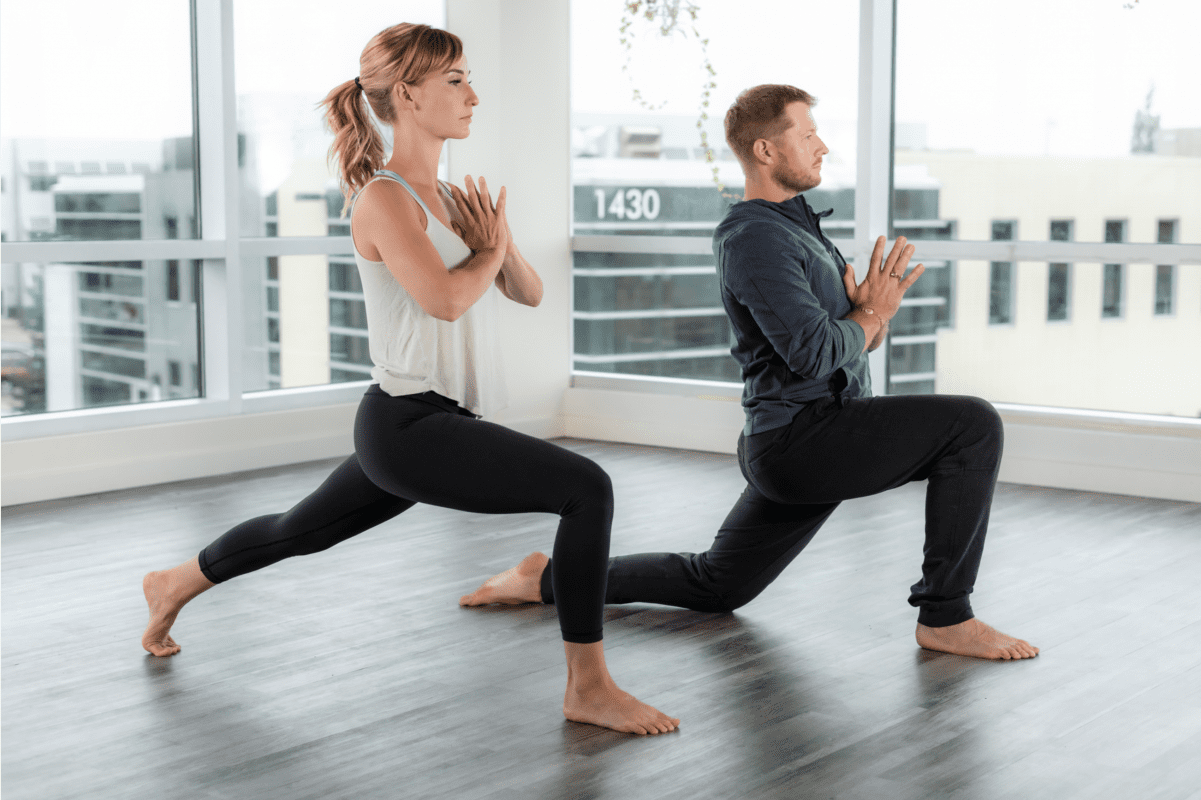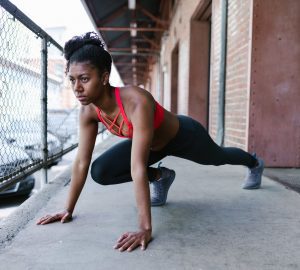Flow or Vinyasa is a style of yoga that links conscious breath with movement. It is important to focus on how you feel in each posture rather than on how you look. Setting a clear intention to focus on function over aesthetics will support a deeper connection with your Self.
The information below includes “big-line” cues designed to help you create the general shape of the pose with your body. It is important to remember that your body is unique. Some cues will work, and some will not, and that’s okay. As you deepen your awareness, you will naturally attune to adjustments that are best suited to you.
Downward Facing Dog
Big Line Cues
- Place your hands shoulder distance (this will vary)
- Place your feet hip-bone distance (this will vary)
- Bend your knees (degree of bend will vary)
- Lift your bottom toward the sky
- Draw your navel inwards and upwards to flow
The Experience
- Envision creating an inverted “V” with your body
- Seal in through the edges of your palms (you may even grip your mat with your fingertips) to feel more freedom through your wrists
- Press down, away from you, and wide with your palms (like you’re trying to pry your mat apart) to feel strength
- Create an uplifting feeling through your hips and descending feeling through your heels
- Set your gaze between your feet, shins, thighs or towards your navel
- Try 5 – 10 deep, expansive yogi breaths on for size and flow
Modifications
- Move to your forearms
- Bring yourself onto your knees
- Place your hands on blocks
- Place a block between your thighs (at any width)
High Plank
Big Line Cues
- Start in Downward Facing Dog
- Inhale to shift forward to a “push-up” position
The Experience
- Press your palms down and try to pull them wide to engage through the sidelines of your body
- Flex your thighs and glutes to feel engaged towards your midline
- Tug your hips towards your ribs to feel containment through your core
- Bring space to the back side of your body by pulling your shoulder blades apart (A slight rounding to your upper back will occur)
- Hold for 5-15 breaths
Modifications
- Lower your knees to your mat and flow
- Bring your forearms to your mat (dolphin plank)
Chaturanga – (Transition from high or low plank)
Big Line Cues
- On an inhale, bring your heart as far forwards as your wrists allow
- On an exhale, bend your elbows and carve them in toward the sides of your body as close as they naturally go (Tip: This will depend on the twist of your bones!)
- Bend your elbows to roughly a 90-degree angle or slightly above
- Pause at 90 degrees and then lower your front body to the floor
The Experience
Tip: To build more strength lower slowly
Tip: Squeeze your shoulder blades together to feel expansive through your front body
Modifications
- Lower knees to the floor
- Bend your elbows to a smaller angle
Back Bend (Transition from Chaturanga)
Big Line Cues
- Continue your exhale from Chaturanga to lower yourself to the floor
- Untuck your toes
- Press the shoelace side of your feet into your mat
- On an inhale, lift your head, chest, and ribs off your mat
- On an exhale lower back down to the ground
- Inhale to move through tabletop
- Exhale to land back in downward facing dog
The Experience
- Squeeze your shoulder blades together and downwards toward your hips to expand through front body
Modifications
- Skip the back bend!
- Sphinx pose (forearms on the ground)
- Baby cobra (hips and belly remain on the ground)
- Full cobra (arms are straightened)
- Upward Facing Dog (arms are straightened, and hips and thighs are off the ground and flow)
Crescent Lunge Pose
Big Line Cues
- From downward facing dog, step your right foot forward between your hands
- Drop your back knee to the floor
- Root down through your front foot to lift your torso into the air with your shoulders on top of your hips and chest square to the front of the room
- Lift your arms into the air
- Soften your shoulders away from your ears
- Hold for 5 – 15 breaths
- Bring your hands to the ground on either side of your front foot and step back to downward facing dog
- Repeat on your other side
The Experience
- Draw in through your core by tugging your hips toward your ribs
- Feel your feet ground down while your torso, arms and crown of the head expand upwards
Modifications
- Lift your back knee to create high lunge
- Place a soft object under your back knee
- Untuck your back toes
- Choose an arm variation (arms up, bent, intertwined behind you, palms on your front thigh, palms on blocks)
Remember that your flow practice is all about connecting with your Self, noticing how you feel and moving through an experience.
By Brandon Jacobs and Heather Gazley








